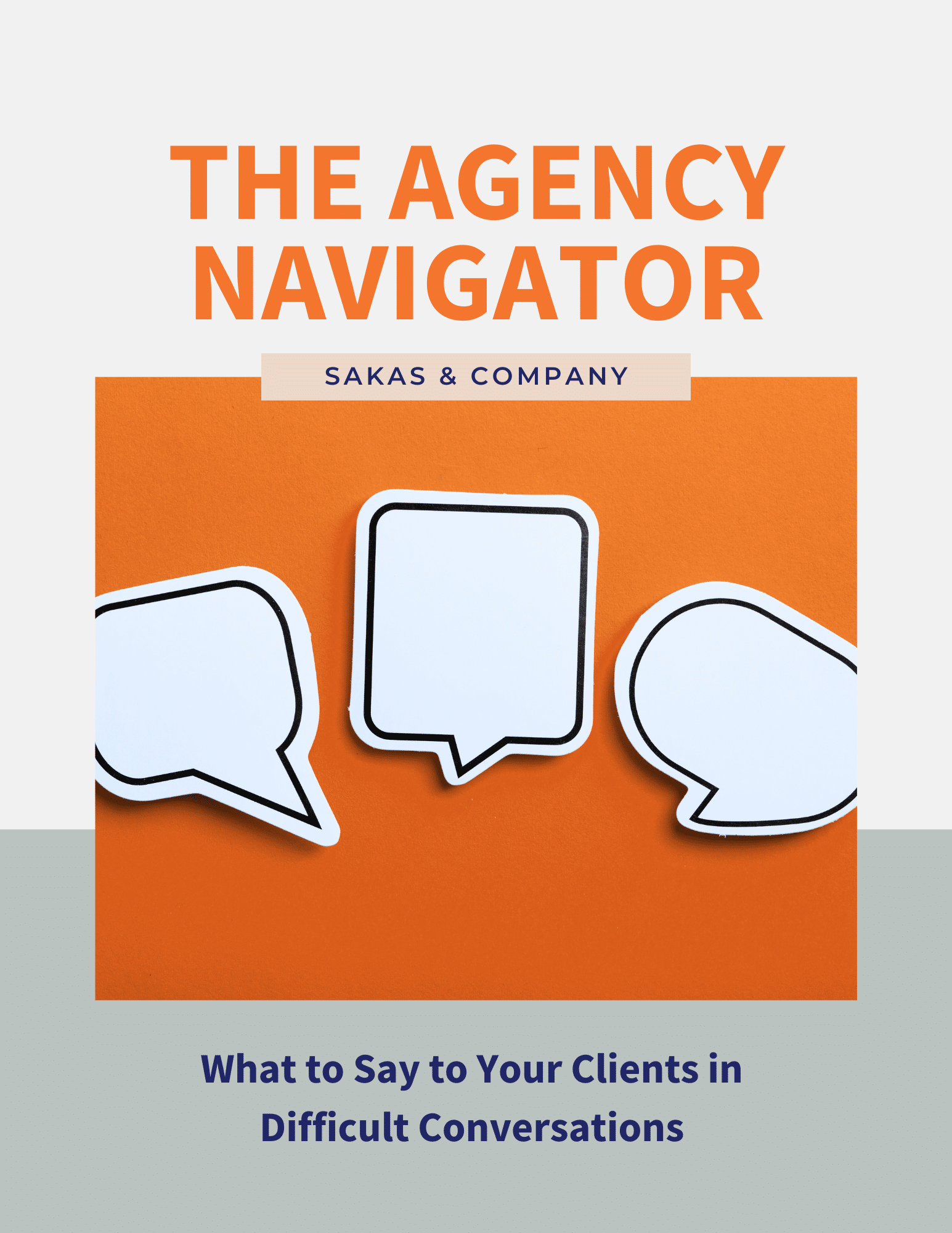Andrew Dymski on what it took for agency GuavaBox to build their DoInbound software product

Andrew Dymski shares lessons from how his agency launched its software product business.
I’m interviewing marketing industry leaders to share their advice and stories. Next up is Andrew Dymski, Co-Founder of GuavaBox and CEO of the agency’s software spinoff ZenPilot (formerly DoInbound).
Want to launch a software product at your agency to get recurring revenue but not sure where to start? Learn from Andrew’s experience since launching DoInbound in 2013.
Andrew co-hosts the Inbound Agency Journey podcast—he interviewed me on a recent episode. He’s based in Pittsburgh, PA.
Be sure to follow Andrew on Twitter at @AndrewJDymski and @DoInbound.
Interview summary: My top 5 takeaways
- Validate market need by doing iterative “customer development” research before you dive too deep.
- Customers—and prospects—will want to know your product development roadmap.
- Prepare to support your product—customer service is different from agency client service.
- Consider building your product via a separate business entity, to help you make time for product R&D and marketing.
- Creating an “opinionated” product helps you build a following of people who like your methodology.
Read on for the details from my interview with Andrew Dymski, conducted at his office in Pittsburgh in early October 2015. Editor’s note: I’ve edited the interview for length and added bolding to highlight key points.
Why to Create a Product: Fixing a Pain
Q: As an agency, what prompted you to make a product?
It was really birthed out of the pain we felt as we were growing our agency GuavaBox. We started doing website designs, social media, and other marketing. A year and a half later, we discovered that if you really want to deliver ROI for people, you need an ongoing strategy. You can’t just build a website and let it sit, or give them the strategy and expect them to follow it.
That’s when our inbound agency launched. We had no client portfolio to go to and try to sell to, so everything that we did was self-discovery and testing on ourselves.
That’s where the pain began to come out. We closed our first few clients, and we got all excited because we’ve got [those] retainer clients. We’re doing inbound marketing for them on a regular basis, but we don’t have a strategy in place from the get-go. We had enthusiasm, we had tactical knowledge, but we had no idea of how to put a system and process in place that would scale a business.
We started looking at project management tools, and we got really frustrated through that process, because we’d be on those demos, and we’d get really excited, and then we’d get inside of it, and we’d realize that there was nothing in there. It’s just a blank canvas.
It’s kind of like looking at a whiteboard, and there’s nothing on the whiteboard. You can draw anything that you want on there—but if you don’t know what to draw, you’re still kind of up a creek without a paddle.
That’s where we were. We didn’t know what to draw. We had never scaled an agency before. So [co-founder] Gray [MacKenzie] and I took a step back, and said, “If we were going to de-construct everything that we’re going to do, how would we go about doing that?” This was an 18-month period where we’re doing trial-and-error, trial-and-error. We started adding gameplans to our process, and leading with a discovery process up front, so the client’s paying you to come in and do a scoping engagement. We were prepping the grounds for inbound marketing.
[You need to] leverage the process to build [client] trust and get to know the client better. [That way,] if you’re going to propose a project or propose a retainer, you’ve already built an element of trust. They’ve already paid you money.
We just started to de-construct the way that we did business and the way that we were going to scale. We listened to a lot of leaders in the inbound agency space and heard everyone say, “You’ve got to document your processes. You’ve got to document your processes.” I remember, we were in INBOUND in 2013, and I came out of three talks and had that underlined. This is what people are saying.
You’ve got to document your processes. We had random Google Docs of certain things, but we didn’t have something to bring it all together in a scaled way.
[As agency owners,] we felt an insane pain around finding a system to manage the work and document our processes. There’s nothing out there that puts these two things together in a way that makes sense for inbound agencies. That’s what launched the idea of DoInbound.
We’re at the two-year mark right now. It’s been an evolution in discovering what the product is going to look like, what customers want. [It came from] a pain that we felt that’s really helped us connect with our customers, because we’ve been in their shoes.
What to Do Before You Code Anything
Q: How do you find time to develop the product?
It’s a big point, because it, at first I walked into it a bit naïvely. I thought that this was something cool that we can do on the side, but I did not have a good understanding—especially from the software development side—how much time and resources that takes. So, if you want to [build a SaaS product], take your time and just think about it.
First of all, verify the pain and the niche. Don’t build a solution first. That’s one thing that I’m really thankful that we did—we called probably 20 or 30 Inbound agencies that we knew, and said, “Hey, what are you guys doing right now for project management? Have you gone through a lot of tools? Are you frustrated like we are in this area?”
Those early conversations—before we coded anything—validated the pain. They hadn’t paid us any money yet. We didn’t pre-sell it, but they had really validated the pain.
For us, [the research] was just casual. We were calling our peers and saying, “Hey, like, have you guys ever been frustrated about this stuff? We’re thinking about building a process and project management tool just for inbound agencies. Would you ever be even interested in that?” We got a lot of positive response.
I think it’s the nature of the Inbound community—it’s a very open, and as you know, it’s a very giving community. I only got hard pushback, “No, I’m not telling you anything about our entire processes” from one person [out of the 20 or 30].
Understand that [getting started is] going to take commitment. Put someone in charge of it—where that’s their role and their job. Once you’ve validated the pain, give someone ownership.
For us, it was our developer—[Mike Hollis] was the first person to come on full time and run with it. Having Mike own that—knowing that this is his thing—gave us the momentum to say that even though the things are more profitable right now in the agency side, we still need to pay attention to this. The runway for [the product business] from a revenue standpoint, is really, really high—giving ownership to it was a big component in making sure that it was successful [because Mike was ultimately responsible for it shipping].
Funding R&D to Build Your Product
Q: Product development requires non-billable time up front. How do you fund that?
For us it was launching this as a second business. We decided not to include it inside of the agency. I read Paul Roetzer’s book The Marketing Agency Blueprint, which got us thinking about starting GuavaBox. Part of his philosophy is to diversify the [agency’s] revenue streams—bring the book under it, bring the speaking under it, bring the consulting under it.
We considered that, but we didn’t have the cash in the company to say, “OK, we can allocate $50,000 to pay this person for the next year.” And we didn’t want to bring another owner into the agency as an equity share.
To keep things clean, we started a second company, and our developer, Mike came in as a founding partner in that. Now he’s building equity with his sweat. He’s taken the first profits out of the company, as pay. He’s done a lot of work for a lot cheaper than he should—but he’s building equity in a company that he’s a co-owner of.
Pull it out on its own thing. Definitely put together an operating agreement— so that, just like the client relationship, “good fences make good neighbors.”
It took 18 months to get a reasonable product ready for market. We validated it early by bringing in customers [after] about six months. It wasn’t ready to bring customers in, but I’m really grateful that we did, because it proved that people had this pain and they’re willing to pay for a solution to this pain.
I’d be really upset if we’d waited 14 or 24 months to launch it without anyone ever paying us, we’d have no idea of A, “will they pay for it,” and B, “what are their thoughts? What are they looking for?” Gathering that feedback from users has been insanely helpful in the development roadmap.
[Instead of a “big reveal,” do] many slow reveals along the way.
Software Expands Your Impact on the World
Q: What has surprised you about developing a product that’s different from providing agency services?
They’re both challenging. They both have challenging elements to them. They’re both enjoyable at different times. But I think having a process in place is key to both, having a system in place.
From the agency side of things, you want to have a process in place that gives the client a journey that says, “As the consultant or as the experts in this space, we’re going to come in and we’re going to help you through this journey.”
On the software/product side of it, it’s helpful to have a vision and a roadmap for where you’re trying to go. [You need to understand] that you’re not going to get there overnight, but collectively, we’re going to put a dot on the map and say, “We want to move towards this direction.”
We want to have a niche focus. We want to service a specific group of people. So having a strategy in play there is really, really helpful.
[You talk about agencies as] is it lifestyle, or do you want to scale it for growth? If you’re an agency and you want to scale it for growth, you’ve got to grow your team. If you want to service ten clients, that’s going to take a certain amount of team members. If you want to service 30, it’s going to take a bigger team. There are rate-limiting factors there.
The rate-limiting factors on the software side of things are a lot smaller, especially if you’re targeting a niche as narrow as we are. So our vision was to grow this thing.
We want to impact and change people’s lives. It takes a lot of people and a lot of infrastructure to do that on the agency side. [Through software, we] can touch a lot more people. We can touch agencies around the world while maintaining a small team and more of that lifestyle feel—enjoying the process, enjoying the relationships. That was a big incentive for us to move this way.
Product Support Means Automating “Touch”
Q: Customer support is different from agency client service. How do you handle product support?
We’ve got [software customers] all over the world, so time zones are a bit of an issue. Our main range is when folks come online in the UK to going off in California. We’ll get requests early in the morning into late at night.
On the agency side, we’re meeting with folks weekly. There’s a personal touch to it. There’s standard meetings. You’re more engaged in the process.
On the software side, [there’s] less touch. We’ll do two personal on-boardings, some coaching and some consulting to get the framework set up—but then after that, they’re in there operating on their own.
To give them resources, we spend a lot of time creating content. [This includes] creating content around the products, training videos, certification videos, even premium training courses. If you come in, you buy the software product to solve a pain, but if you want to dive in and sink your teeth into the framework, we offer more in-depth courses on top of that, or more in-depth tools.
From a relationship standpoint—on the software side—more is automated than on the agency side. We have to think about Frequently Asked Questions, giving them the resources to answer those. [That way,] when they do reach out, it’s normally a technical question where they’re not sure what’s going on with the platform, [a question about] how to do something, or a strategy question.
I’m working on my first gameplan call this week. “What should I include in my sales presentation,” or “What should I include in my contract,” because we’re an opinionated software, and we’re more than just a software. The software is the platform where this framework lives.
DoInbound is a higher way of thinking about how you run your agency. Folks are typically asking more questions about the higher-level things, and since we have invested in that content creation, we’ve got that there to delight them through that process. We’re all replying to service requests, and those come in through Intercom. We couldn’t run our business without Intercom.
[Intercom] allows folks who are using the platform to reach out directly to all of us, and we can get back to them right there. It’s a complete log of the conversation and everything, and it’s a really, really cool platform. I think it gives them that personal feeling, that personal touch, because we work with folks around the world, but at the same time, they know all five of us and they know who we are and that we’re going to be there to help them out. That platform really helps us through that process.
Opinionated Software & Product Development Roadmaps
Q: How do you manage feature requests? An agency can customize anything for a client, but there isn’t budget to do that for a software customer.
It’s a tough row to hoe, because you want to validate the concern that people have or validate the pain that they’re feeling and the feature that they’re suggesting. But if it doesn’t fit into your roadmap, you don’t want to give them false hope of saying, “Great idea, we’ll definitely get that in there,” if you’ve got no intention of doing that. So we try to be honest and up front, and just tell them, “Great idea, we’ve got that on a list already. It’s not a high priority right now, just so you know. We’re working through some other things prior to that. Here are some of those things.”
To date, we have not published our roadmap publicly. So folks don’t know what’s coming up next unless we tell them, but we’ve been hearing a lot of feedback from our customers about “we want to know what’s coming up, we want to know what you’re working on next.”
So that’s something that we’re going to change. We’re going to publish our roadmap for the first time and give folks a view into what’s coming up. [This also helps for prospective clients,] if they’re kicking the tires.
[Update from Karl: You can now see DoInbound’s product roadmap online!]
[Opinionated platforms] have a methodology, and they give you the platform to execute the methodology. HubSpot’s a great example—there’s a lot you can’t do on HubSpot because it just doesn’t make sense [in the inbound marketing methodology]. The bigger they get, the more they [let you do], but at its core, there’s certain fundamental things that they teach you to do, and we’re the same way.
When you’re managing a retainer or you’re managing a web project, there are certain things that need to go into that. We want to give you the framework to execute that. Since we’re that opinionated, I think that it’s going to be really, really helpful to show folks, “Here’s where we’re going, but also, here’s where we’re not going.”
Question: What’s your top takeaway from Andrew’s advice for agencies building a software product?


